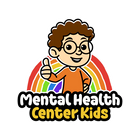|
Key Takeaways:
- Conduct disorder in children and teens is characterized by aggression, destructiveness, deceitfulness, and manipulative behaviors.
- Professionals can treat conduct disorder through various psychotherapies, family therapy, and anger management training.
- Parents and caregivers can support children with conduct disorder by learning to communicate, being patient, and bonding with their kids.
|
All children naturally exhibit some form of rebellion as they grow older, but sometimes this rebellion can develop into conduct disorder. This condition causes children to become aggressive, potentially harming others and themselves.
If you suspect your child has conduct disorder, know that there are options for treatment. Learn what to look out for when diagnosing a conduct disorder and how you can help your child manage their symptoms.
What is Conduct Disorder?
Conduct disorder is a mental health condition affecting children and teenagers. Individuals with conduct disorder display aggressive behaviors and violate social norms. They may also physically harm others.
Conduct disorder is on the spectrum of disruptive behavioral disorders like oppositional defiant disorder (ODD). [*] It often occurs alongside other mental conditions like depression in children or teens and learning disorders.
What’s the Difference Between a Conduct Disorder and a Personality Disorder?
Conduct disorder occurs primarily in children and adolescents, whereas personality disorders like Borderline Personality Disorder (BPD) and Antisocial Personality Disorder (ASPD) are only diagnosable in adults over 18. The prevalence of conduct disorder decreases with age but can occur concurrently with other conditions like ADHD in teens and children and similar diagnoses.
What Causes Conduct Disorder?
While researchers can’t pinpoint definite causes of conduct disorder, genetic, biological, and environmental factors can all contribute to its development. For instance, a hostile home environment can cause a child to develop conduct disorder, especially if they are exposed to abuse, substance use, or a general lack of adequate parenting.
On the other hand, children can also develop conduct disorder as a result of traumatic brain injuries and neurological conditions. These may increase or trigger aggressive behaviors [*].
What are the Risk Factors of Conduct Disorder?
Children are more likely to develop conduct disorder under the following circumstances:
- They have a parent or other close family member with conduct disorder.
- They are exposed to frequent domestic violence.
- They live in a low social and economic environment with overcrowding, high crime rates, and unemployment.
- They are being bullied or have friends who encourage negative behaviors.
- They are abused or neglected.
What are the Symptoms of Conduct Disorder?
The symptoms of conduct disorder develop over time and are typically characterized by four core behaviors:
-
Aggression toward others: bullying, physical violence, threats, verbal abuse, forcing sexual activity
-
Destruction of property: setting fires, vandalism
-
Violation of rules: breaking rules intentionally, skipping school, leaving home without warning
-
Deception, lying, and stealing: stealing, breaking into houses or other property, lying to get something in return
It’s important to note that occasional rebellious behavior is common in early adolescence. For these behaviors to become characteristic of conduct disorder, they must occur chronically.
How is Conduct Disorder Diagnosed?
For a child or teen to be diagnosed with conduct disorder, they must display symptoms for at least a few months. In addition, this behavior must be significant enough to impair functioning relationships and disrupt the child’s daily life.
A child and adolescent psychologist or psychiatrist makes the diagnosis with specially designed interview and assessment tools. They also interview the child’s parents, siblings, other family members, and teachers.
The clinician will then conduct a behavioral assessment, using observations or a rating scale, to determine the frequency and severity of certain behaviors. They will base their diagnosis on the Diagnostic and Statistical Manual of Mental Disorders (DSM-5), which dictates the criteria for conduct disorder.
How is Conduct Disorder Treated?
The sooner a child receives treatment for conduct disorder, the better the prognosis. Below are some common treatments for conduct disorder.
Psychotherapy
Psychotherapy is the most popular and effective treatment for conduct disorder. Psychotherapy may employ various techniques, such as cognitive-behavioral therapy, which focuses on developing adequate problem-solving skills [*].
Psychotherapy for conduct disorder targets family life and academic performance, with a focus on improving family dynamics and academic functioning.
CBT for kids with conduct disorder typically involves role-playing and games to demonstrate emotion regulation techniques. In contrast, CBT for teens employs more complex techniques, such as identifying triggers, cognitive restructuring, and developing coping strategies.
Anger management training
While children with conduct disorder can’t necessarily eliminate the triggers that make them angry, they can learn to manage angry emotions through anger management training. This treatment focuses on reducing the child’s emotional feelings and the psychological arousal the anger causes.
Anger management training might include relaxation techniques such as meditation, positive reinforcement for good behavior, and cognitive restructuring.
Family therapy
Part of overcoming conduct disorder is teaching parents how to encourage good behavior. Through family therapy, practitioners can identify and address family patterns. They help improve family relationships by providing parents with practical skills, such as setting clear limits and managing challenging behaviors.
What is the Prognosis/Outlook for Conduct Disorder?
Early intervention improves the outlook for children with conduct disorder. Although symptoms usually cease in early adulthood, one-third of these cases continue.
In addition, the early onset of conduct disorder has a poorer prognosis. If a child develops conduct disorder before age ten, they’ll likely experience a significant decline in academic performance.
Some children with conduct disorder may also develop other mental health conditions, such as ADHD, substance use disorder, somatic symptom disorder, and early adult-onset psychotic disorders [*].
Can Conduct Disorder Be Prevented?
Conduct disorder isn’t necessarily preventable, but parents and caregivers can lessen symptoms through early detection and intervention. It’s best to address symptoms of conduct disorder as soon as they become noticeable.
How to Support a Child or Teenager with Conduct Disorder
If your child or teenager has conduct disorder, there are many ways to show support:
-
Educate yourself: Learning more about conduct disorder puts you in a better position to understand your child’s behavior and emotions. The more you know about the condition, the better you can respond to potential outbursts.
-
Work on communication: Improving communication is the best way to avoid power struggles with your child. For instance, you can use “I” statements to express feelings without blaming your child and practice active listening.
-
Build a positive relationship: A trusting parent-child relationship can motivate kids to confide in their parents. By building a positive relationship with your child through quality time, you can encourage them to correct unwanted behaviors without being “preachy.”
-
Be patient: conduct disorder has a solid correlation with depression in teens and kids, so it’s essential to be patient and empathetic. The condition can cause adolescents to become self-isolated and emotionally dysregulated, so putting in the work will go a long way.
When to Seek Professional Help for Conduct Disorder
If your child’s conduct disorder symptoms become severe, it may be time to seek professional intervention. It’s vital to take your child to a professional if they harm themselves or others, especially when they become callous and unemotional.
The Bottom Line
Conduct disorder can have harmful and devastating results when left untreated, so it’s essential for parents and caregivers to seek help for their children. Starting treatment early can distinguish between a well-adjusted adult and a challenging professional life.
Explore our CBT worksheets to help your child develop healthy and positive coping skills to manage conduct disorder.
Sources:
- Burke, J.,Waldman, I ,Lahey, B. “Predictive validity of childhood oppositional defiant disorder and conduct disorder: Implications for the DSM-V.” Journal of Abnormal Psychology, 2010.
- Wood, R and Thomas R. “Impulsive and episodic disorders of aggressive behaviour following traumatic brain injury.” Brain Injury, 2013.
- Morino Y. “Ideas of the change process: family and therapist perspectives on systemic psychotherapy for children with conduct disorder.” Journal of Family Therapy, 2018.
- Erskine HE, Norman RE, Ferrari AJ, et al. “Long-Term Outcomes of Attention-Deficit/Hyperactivity Disorder and Conduct Disorder: A Systematic Review and Meta-Analysis.” Journal of the American Academy of Child & Adolescent Psychiatry, 2016.





















































